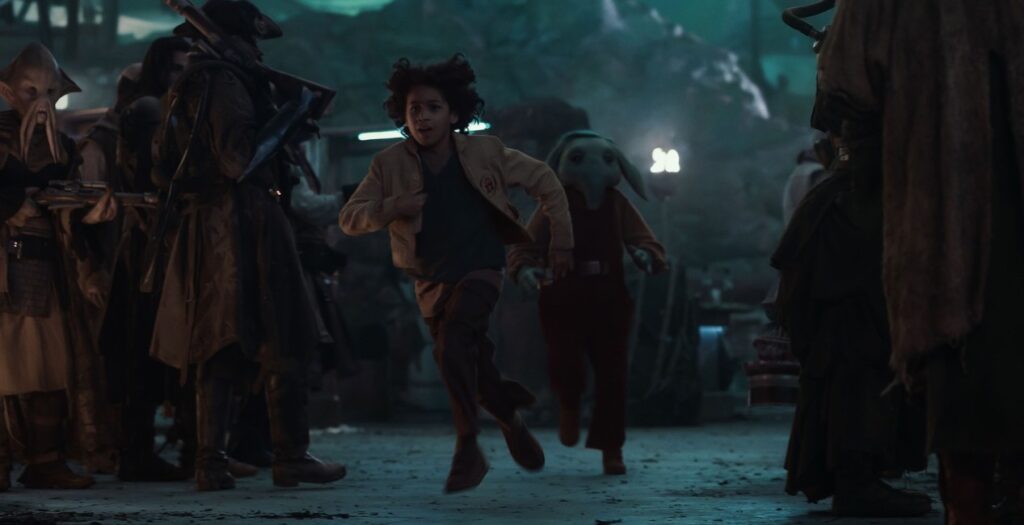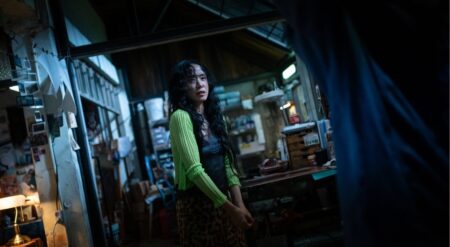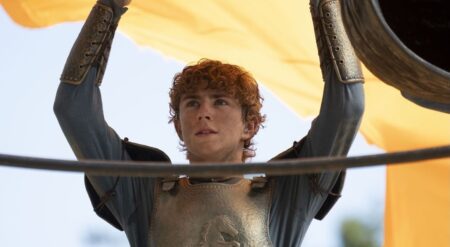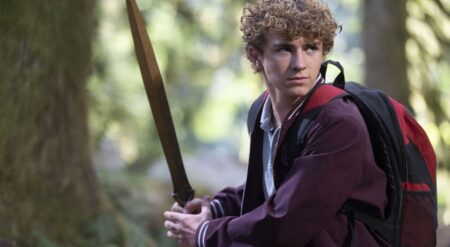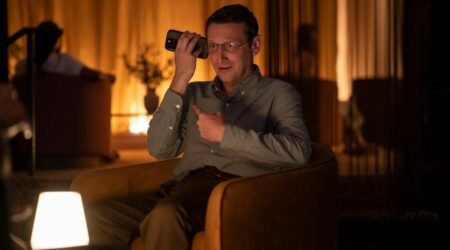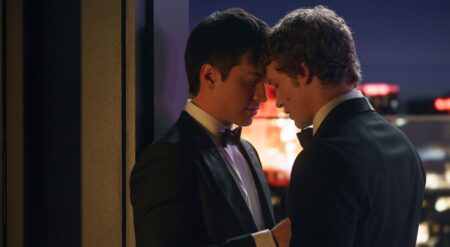When Skeleton Crew Season 1 was announced, it promised to explore a unique corner of the Star Wars galaxy, delivering a story about kids lost in a vast universe. What it offers is something far greater: a layered, intricate narrative that proves the Star Wars sandbox has room for more than just Jedi, Sith, and epic space battles. Instead, the series carves out its own space with themes of survival, trust, and finding the light in even the darkest corners of the universe.
Star Wars: Skeleton Crew Season 1, from its first episode to its thrilling finale, is a testament to what happens when you let creators fully embrace the limitless possibilities of the universe. This is not a show that holds your hand or confines itself to preconceived notions about what a “kids’ show” should be. Instead, it dares to tell a story as layered, challenging, and rich as anything in the galaxy far, far away. While the show revolves around children, it tackles profoundly adult themes and topics.
Let’s get this out of the way: Skeleton Crew Season 1 is not just a kids’ show. It’s a show made for kids and adults alike, honoring both audiences by tackling weighty topics while maintaining the energy and wonder that appeals to younger viewers. From the harsh realities of survival in a pirate hub filled with vice and violence to the broader implications of war and systemic failure, this show asks questions that demand thoughtful reflection.
The inclusion of elements like sex workers in the pirate cove, who Togruta hides as trophies, and gluttony as a symbol of excess aren’t just set dressing. Instead, they’re reminders that the galaxy is harsh and that goodness often shines brightest when surrounded by darkness. Skeleton Crew Season 1 doesn’t abandon hope.
Skeleton Crew Season 1 challenges its characters to hope.
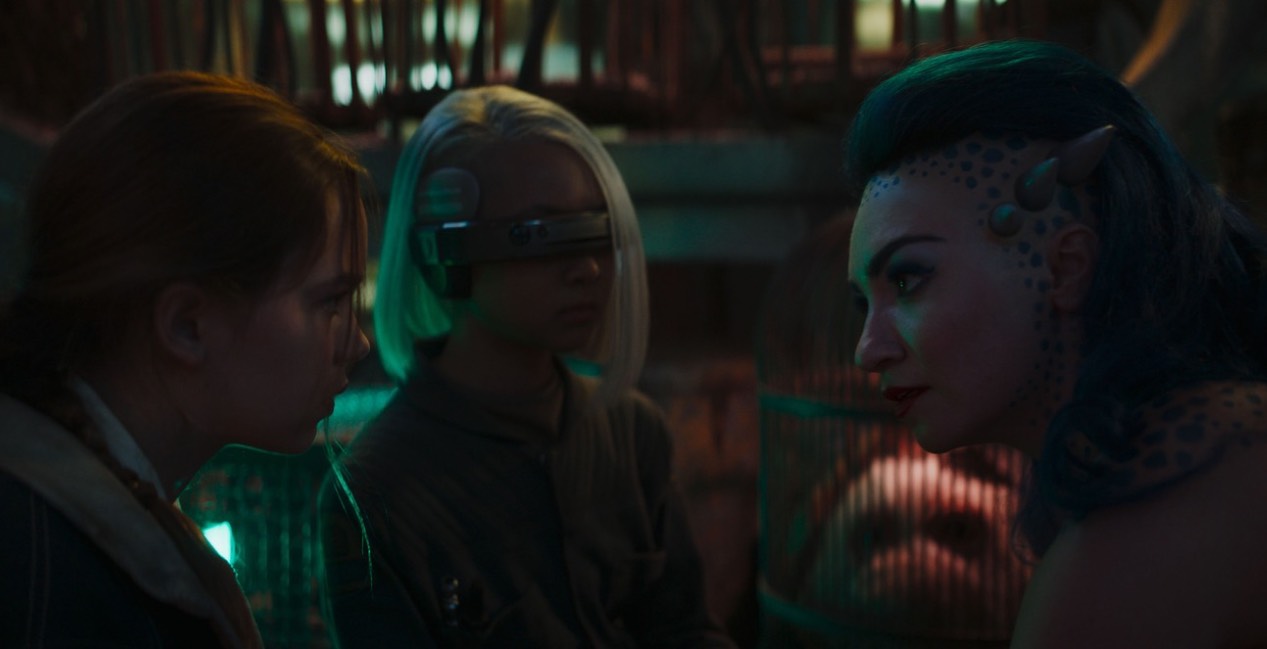
The show is full of moments that highlight the good in the galaxy, whether it’s an unexpected act of kindness or a community coming together to protect what matters most. This balance between grit and optimism makes Skeleton Crew a standout amongst its contemporaries. It challenges its audience—kids and adults alike—to grapple with these contrasts and see that while the galaxy can be unforgiving, it’s also full of potential for change and connection.
The heart of Skeleton Crew Season 1 lies in its characters, particularly the kids. Over the course of the season, we see Wim (Ravi Cabot-Conyers), Fern (Ryan Kiera Armstrong), Neel (Robert Timothy Smith), and KB (Kyriana Kratter) grow not just as individuals, but as a cohesive and resilient team. By the end of the series, the dynamic has shifted: the kids, once wide-eyed and naive, become the ones best equipped to navigate the galaxy’s dangers, while their parents, though resourceful in their own ways, struggle to adapt to a world that their children are rapidly mastering.
Each child’s growth is genuine and integral to the story. Wim’s courage and determination drive the group forward, even when the odds seem insurmountable. Fern’s sharp strategic thinking, coupled with her unwavering loyalty, makes her the group’s moral and tactical anchor. Neel’s journey from timid follower to confident contributor is one of the most rewarding arcs, as he steps into roles that once felt out of reach. KB’s analytical brilliance and quiet vulnerability are palpable, showing that strength comes in many forms, even those that aren’t always visible.
The series also explores how this growth influences their relationships with the adults around them. The kids’ hard-earned experience navigating the galaxy contrasts sharply with their parents’ struggles to reconcile the realities of a universe far harsher than they imagined. This role reversal is poignant, highlighting the kids’ resilience and the importance of intergenerational trust and collaboration. It’s a reminder that growth and understanding are not confined to age—and that sometimes, the most significant lessons come from the most unexpected teachers.
All killer no filler.
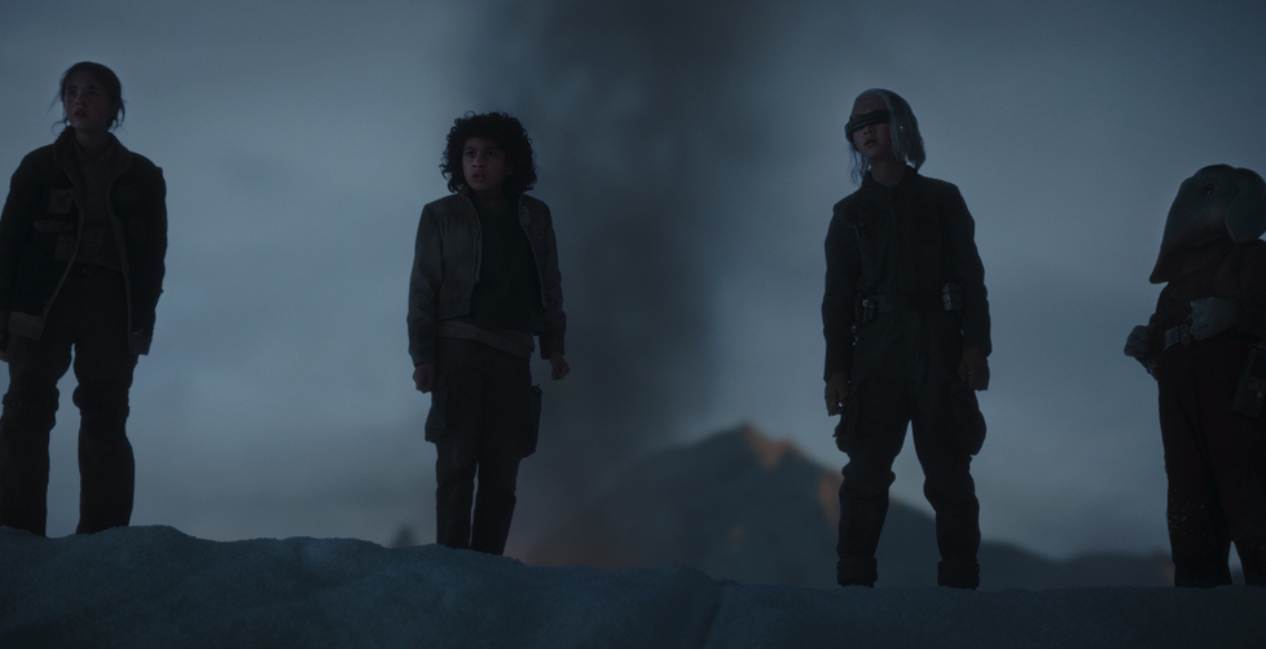
One of the most consistent critiques of recent Star Wars series has been their runtime and episode structure. Often, fans debate whether eight episodes are enough to tell a complete story or if longer seasons would allow for better pacing and development. Skeleton Crew Season 1 proves that eight episodes can be precisely the right length when a story is tightly constructed and purposeful.
In Skeleton Crew Season 1, every episode matters. There’s no filler, no wasted moments. Each scene, each character arc, and each revelation feels vital by the time the finale wraps. The kids’ growth, the unraveling of Jod’s true nature, the mystery of the Mint, and the parents’ evolving role all weave together seamlessly. By the time the credits roll on the final episode, Skeleton Crew has accomplished what it set out to do: tell a compelling, complete story without dragging its feet or overstaying its welcome.
For all the chatter about Star Wars needing multiple seasons to flesh out its stories, Skeleton Crew Season 1 demonstrates that it’s not about the number of episodes—it’s about trusting the creators, writers, directors, and actors to deliver something meaningful. The focus shouldn’t be on padding out runtime or artificially extending arcs; it should be on dedication to telling a great story. Trust your story, trust your creators, and trust your audience to follow you.
One of the Skeleton Crew Season 1’s greatest strengths is its diversity of voices. The directors and the diverse writing room make it clear that Star Wars thrives when more perspectives are at the table. Each episode feels distinct while contributing to the overarching narrative, showing how collaboration enhances storytelling.
The latest Star Wars entry prioritizes community.
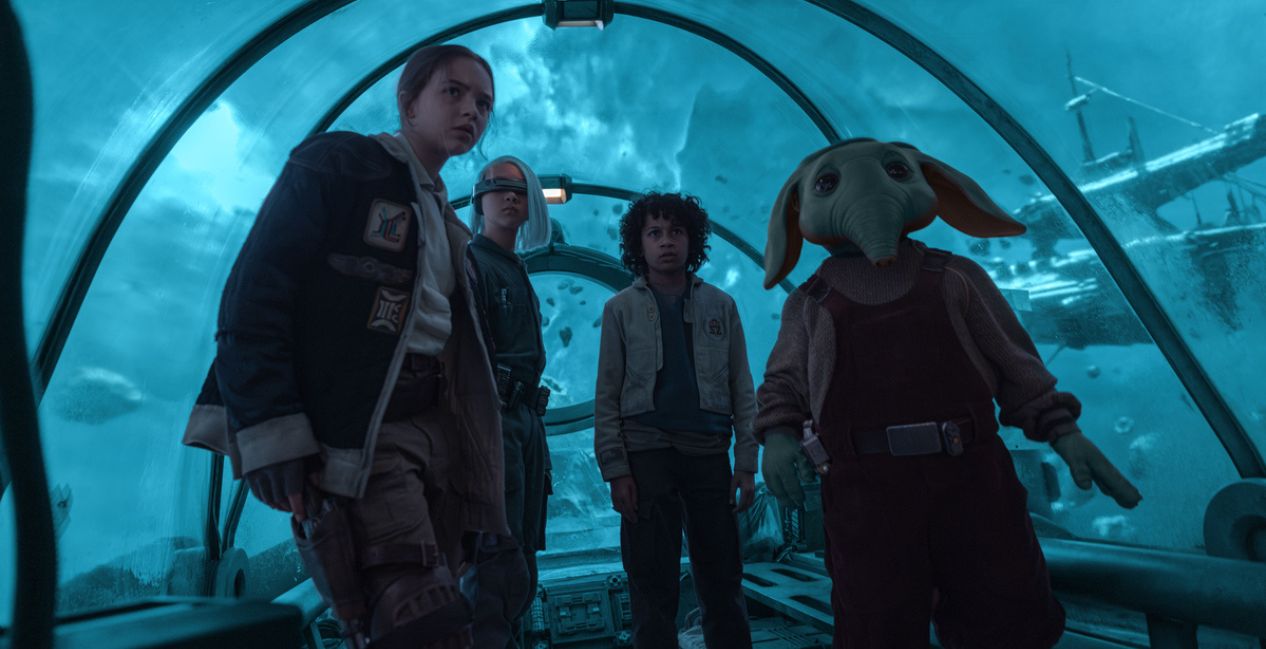
This ethos of collaboration is mirrored in the series’ core message: things are better together. Whether it’s the kids relying on one another, the parents using their collective skills to send a message to their children, or the broader theme of community triumphing over isolation, Skeleton Crew repeatedly emphasizes the importance of unity in difficult situations.
Skeleton Crew Season 1 doesn’t shy away from exploring weighty and often uncomfortable themes. Questions of privilege, survival, and the morality of resistance permeate the narrative, often through the lens of the kids’ experiences in the galaxy. Neel and Hayna’s conversation about why some people have no choice but to fight stands out as a pivotal moment. However, while the scene hints at the larger complexities of struggle and sacrifice, it feels like a missed opportunity to delve deeper into the systemic inequalities that drive these choices.
These moments highlight Skeleton Crew’s strength: its willingness to engage with complex, thought-provoking ideas without oversimplifying them. The show respects its audience—children and adults alike—to grapple with these discussions, even if they remain unresolved. It mirrors the real-world gray areas of morality and survival, resisting the temptation to wrap everything in a neat, tidy bow.
The series uses the kids’ journey to illustrate how hope, resilience, and solidarity can emerge even in the most challenging circumstances. It’s a testament to the series’ depth and ambition, proving that Star Wars stories can challenge us to think critically about the worlds—fictional and real—that we inhabit.
The series offers a rich evolution of this franchise.
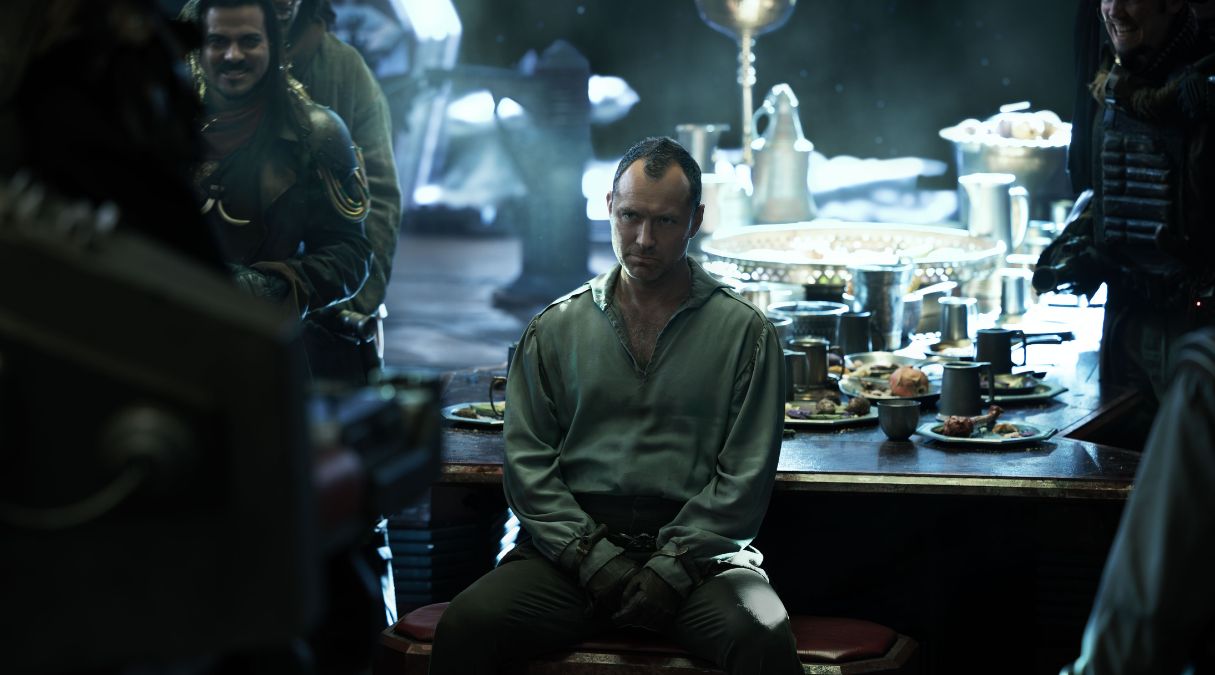
Jod (Jude Law), or whatever his actual name is, is one of the most compelling elements of Skeleton Crew Season 1. As a force-sensitive survivor of Order 66, he embodies the galaxy’s fractured legacy. His disdain for the kids—dismissing them as “spoiled”—reveals a life marked by loss and rejection. Yet Jod’s tragedy doesn’t absolve him.
Jod’s choices are driven by greed and self-preservation, turning him into a figure of betrayal rather than redemption. He serves as a narrative foil to the kids, who learn to rely on collaboration and selflessness, while Jod remains consumed by his inability to move beyond his past. His arc is a stark reminder of the galaxy’s moral complexity, where even those with the potential for greatness can become villains shaped by systemic failures.
The Mint at At Attin adds another layer of intrigue to the series, serving as a metaphor for the galaxy’s buried truths and unresolved histories. With its thousands of vaults of Old Republic credits, overseen by droids who are aware of Order 66 and the Jedi, the Mint’s connections to the High Republic’s “Great Works” are undeniable. It evokes Chancellor So’s utopian vision, raising questions about how idealistic efforts can be twisted over time.
The Mint also expands the galaxy’s lore, teasing the possibility that it was either a product of the Republic’s ambition or a tool repurposed for darker purposes. Its implications ripple beyond Skeleton Crew, touching on themes of wealth, power, and the systems that perpetuate inequality. Together, Jod and the Mint represent the galaxy’s duality: the personal consequences of systemic failure and the larger institutional mysteries that shape the universe. Both are vital threads in a story that doesn’t shy away from complexity, making Skeleton Crew Season 1 a rich addition to the Star Wars saga.
The visual scope and scale brings a fresh sense of adventure.
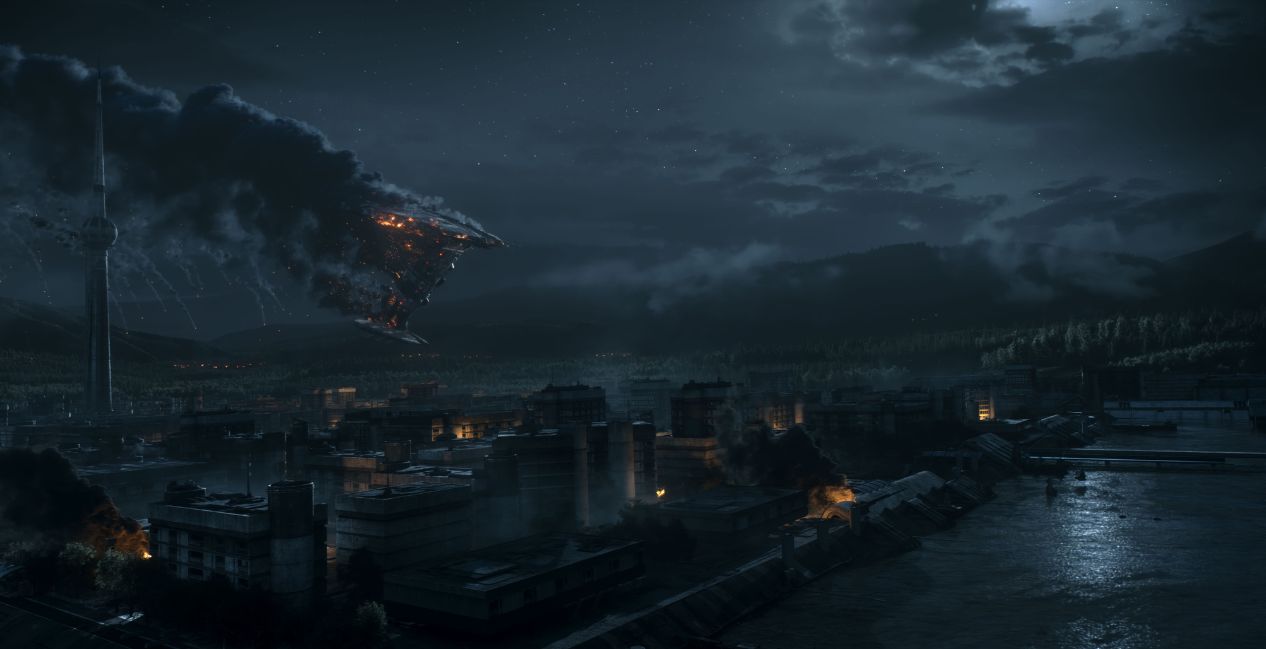
Visually, Skeleton Crew pushes the boundaries of what a Star Wars series can achieve. The directing team captures the vastness and danger of the galaxy, juxtaposing the claustrophobic interiors of pirate hideouts with breathtaking shots of looming ships that feel like harbingers of doom. This deliberate focus on scale and perspective breathes life into the galaxy, making it feel alive, unpredictable, and perilous.
This sensory feast is also reflected in the music. The score, composed by Mick Giacchino, takes the familiar Star Wars musical palette and infuses it with a swashbuckling, adventurous spirit. Giacchino’s compositions evoke pirate adventure vibes that perfectly complement the show’s themes of danger, discovery, and camaraderie.
It’s a bold departure from traditional Star Wars music, proving that the galaxy’s soundscape is just as flexible as its storytelling. The visuals and music create an immersive experience that grounds Skeleton Crew Season 1 in the familiar while boldly charting new territory. This series dares to ask what Star Wars can be—and answers with a resounding sense of adventure, danger, and heart.
The show leaves its mark as a testament to Star Wars’ potential when it ventures beyond the expected. It’s not content to simply exist as another story in the galaxy far, far away—it demands to be more. By embracing complexity, challenging its audience, and taking risks with its tone, visuals, and music, the series demonstrates that Star Wars is at its best when it pushes boundaries.
Skeleton Crew moves beyond the Rebellion and Empire for something new.
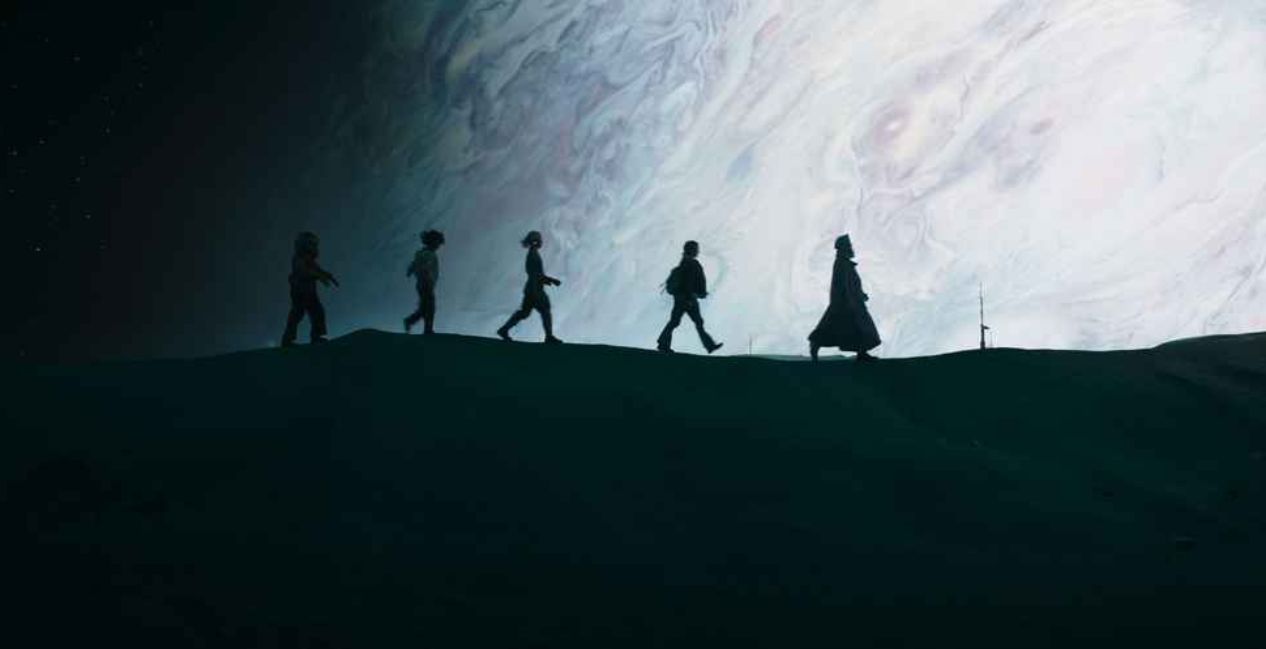
This season didn’t need grand space battles or a revolving door of legacy characters to earn its place in the franchise. Instead, it relied on its heart: the kids’ growth, the layers of Jod’s moral ambiguity, and the haunting mysteries of the Mint. It’s a story that dared to show the galaxy’s darker corners while still insisting there’s light to be found if you’re willing to look for it.
More than anything, it feels alive. It reminds us that the Star Wars galaxy isn’t just the backdrop for tales of Rebellion and Empire—it’s a place filled with ordinary people navigating extraordinary circumstances. It’s a galaxy where hope isn’t just a theme; it’s a choice.
As the credits roll on the finale, the series stands tall not just as a great Star Wars story but as a great story, period. It leaves us with the hope that Star Wars will continue to explore new perspectives, tell daring stories, and trust its creators to deliver bold, meaningful narratives. If Skeleton Crew Season 1 teaches us anything, it’s that the Star Wars sandbox is big enough for every kind of story—and the best ones might still lie ahead.
Star Wars: Skeleton Crew Season 1 is available now on Disney Plus.
Star Wars: Skeleton Crew Season 1
-
Rating - 10/1010/10
TL;DR
If Skeleton Crew Season 1 teaches us anything, it’s that the Star Wars sandbox is big enough for every kind of story—and the best ones might still lie ahead.

